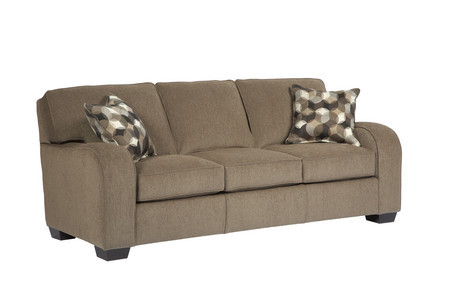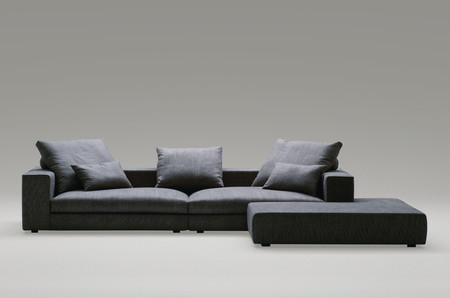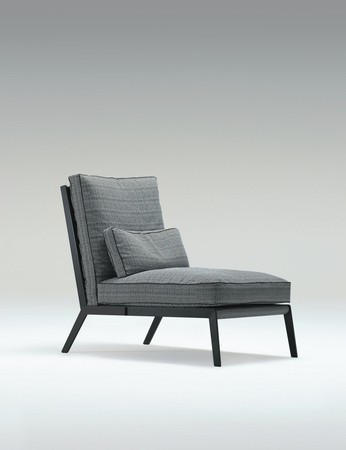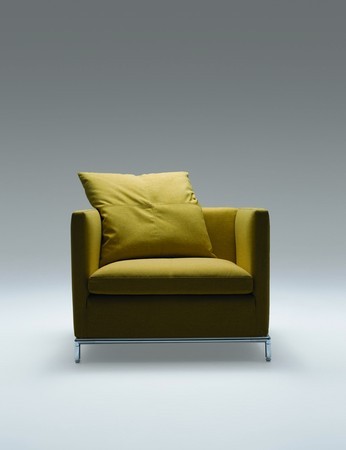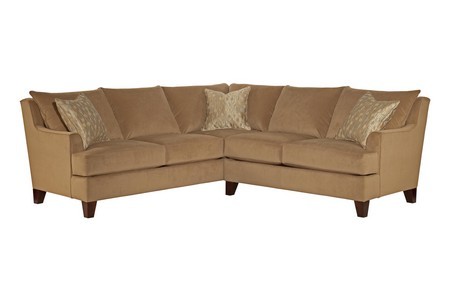Remain neutral
By definition, something that is neutral has no particular characteristics. In home décor, something that is neutral has no hue and matches well with many or most other colors and shades.
So, it should come as no surprise that neutrals remain popular choices for home furnishings, especially upholstery.
"The difference in furniture versus apparel is that we're not going to switch from one season to the next. Furniture is a high-ticket item. You don't want it to got out of trend from one season to the next," said Evelyn Lee of Camerich U.S.A., a Seattle, Wash.-based furniture manufacturer that specializes in upholstery.
According to trend monitor and new products expert Julie M. Smith of Nine Muses Media, neutrals are easy to live with, age gracefully and are extremely versatile.
"They are timeless and classic. Color, pattern and ornamentation can be added and subtracted on a whim."
With accessories such as throws and pillows, an ordinary sofa can become elegant and luxurious, she added.
However, instead of just basic white, black and brown, which have been popular neutrals during the past decade, today's neutral upholstery fabrics are employing various shades of brown, including taupe, mocha and caramel, as well as gray. Smith also sees light blue as an emerging trend in neutrals.
"Gray is a refreshing addition to the neutrals category. We saw the gray trend emerge in midpriced fabrics about a year ago," said Paul Peters, vice president, upholstery, for Broyhill Home Furnishings. "The warmer charcoal palette is gaining significant momentum for Broyhill because it combines so well with browns and more saturated colors. While taupe remains a staple at Broyhill, we are also seeing new popularity in cleaner taupe shades that complement mineral greens and blues."
Lee said the slightly colored neutrals are a good alternative to black or white. With something as large as a sofa, you don't want such a big piece to be black or it will dominate the room's décor, she said.
"Gray or light brown is a good alternative. It's still forgiving and, at the end of the day, you want something that is practical and usable."
She said the lighter browns also complement wenge woods, which are being used more often as a flooring material. "It could be a little too dark with darker shades in upholstery. That's why we are seeing more lighter shades."
But being neutral doesn't equate to being boring, Lee added. Today's neutral fabrics have a great deal of texture -- think wool and tweed -- that add interest to the basic color.
Having a neutral piece of upholstery also is more practical and falls into the way modern consumers are making purchases. In light of the economy, consumers are buying furnishings that will last for many years. Smith said having neutral upholstery adds longevity to the piece because it is easy to change its looks.
Lee said Camerich makes its fabric sofas with removable upholstery.
"We're seeing a bigger demand for that. People don't want to be locked down to one color if it will last for 20 years. They want to have the option to change the colors or take the covers down to have them dry cleaned."
This philosophy is part of the Belgian aesthetic, which finds consumers looking for a more intelligent definition of luxury, Smith said. They look for quality pieces that have honest design and are truly functional and durable.
"Linen is the fabric of choice, answering multiple demands for function, durability and subtlety," she said.
Furniture in this aesthetic is high in architectural elements, allowing pieces to stand on their own or be part of a group.
"Consumers are becoming more and more educated and asking questions," Lee agreed. "They are asking questions such as how it was environmentally made, how to care for the sofa, will it last and about the construction inside and how it was created."



